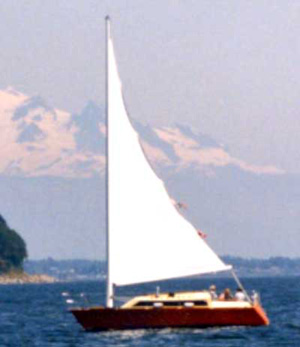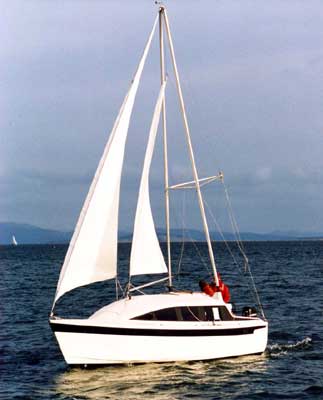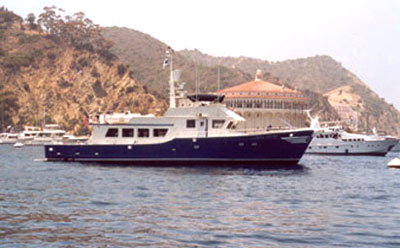 |
|||||||||||||
|
|||||||||||||
|
Book of Dreams ....
Motor Yachts - Over 100ft/30m • Motor Yachts • Motor Sailers • Sailing Yachts • Dinghies • Book of Dreams "Book Of Dreams - This compilation of our work is available as a 125-page book including yacht profiles, interior layouts, technical articles and introductions to each section by Pat Bray. A "sneak peek" at the cover and introductions to chapters is shown below. The price is $35.00 including shipping and handling. Contact us to place an order:
 ALL RIGHTS RESERVED This book and all it's contents are the intellectual property of BRAY YACHT DESIGN AND RESEARCH LTD. and may not be copied, duplicated, given out, or used without their written permission. FOREWORD Some of you are familiar with my work and to others I am a new name. I have been working in this industry since 1973 and started my own company in 1975. Through Bray Yacht Design And Research Ltd. I have worked on a variety of projects including the Polar 8 Ice Breaker, military work with the Department of National Defense, the Boeing Jet Foil, performance motorsailers, and a shipyard in the People's Republic of China. Much of this work is shown in this book. I have worked as a builder in fiberglass, aluminum, and wood/epoxy, as a consultant and technician for research work in model test tanks in Canada and China, and project manager for pleasure and commercial vessels as well as designing boats on my own and also with Robert Harris, Ted Hood, Jay Benford, and Peter Hatfield. My approach to design has always been very thorough and innovative. I greatly admire the works of such radical and forward thinkers as Philip Bolger and Francis Herreshoff and I believe it is the architect's job to advance the science of marine architecture by thoroughly analyzing and researching new ideas to produce alternate solutions to old problems. I have attempted to do this in my designs and will continue to do so. I believe you will find them interesting and worthy of close inspection. Virtually all the designs shown are available for builder and dealer inquiries; some have been indicated as such specifically. Many larger boats are for custom design and building by more experienced yards. Inquire for more information from my office on any particular concept, even though the boats on the following pages present some new ideas there are many more possibilities. List your priorities and keep your mind open to alternate solutions which may better meet the objectives you have set out. Custom design and building is not as expensive as many people imagine and the end result is most gratifying. I have done several designs which were custom built for the same price or less then a similar production boat. Once again it never hurts to ask. Sit back and please, enjoy the following pages. Patrick J. Bray
DINGHIES  Although dinghies are the
smallest of all boats their design requirements are one of the most complex. Dinghies,
especially yacht tenders must be kept short in length, be very seaworthy, and capable of
carrying great variations in load. It would not be unusual to require a dinghy to carry
three adults and on a rare occasion may be loaded down with as many as six kids and adults,
although this certainly can not be recommended. Yet this same vessel is expected to be
stable and well mannered with only one on board, while being easy to row or power under all
conditions of sea and loading. Being able to carry a modest sail rig and perform smartly
around the anchorage is also a real asset. All this has to be neatly framed into a pleasing
shape, and packed with common sense and available for a down to earth price. If it can be
easily home built, so much the better. SAILBOATS 
My sailboats all benefit from the extensive research and development work that I have done on low ballast ratio-high form stability hull shapes and their effects on overall stability. For this reason my boats have ballast ratios below 30% and yet retain as much stability and range as any other boat. (Please read the article The New ULDB for a more technical explanation.) Although light displacement these boats are not lightly built and all meet or exceed the American Bureau of Shipping (ABS) rules for yachts (in some cases for unlimited ocean racing yachts.) As can be seen in the following pages this technology is used in the cruisers to which the advantages of being faster, easier to handle due to smaller sail area, and less expensive because of their lighter equipment is of great benefit. There seems to be an improvement in the motion as well, although that is impossible to show by numbers. Common sense and practicality are predominant features in all my boats and this makes them easy to build; at home, in a small custom shop, or in production, as well as easy to live in afterwards. Many of my designs have been built by experienced yachtsman for extended cruising and live aboard. The longer they own them the more they appreciate the extra thought that has gone into their planning. MOTORSAILERS  Like my sailboats, my motorsailers have benefited from extensive model testing and work done with low ballast ratios. (Again if you have not read the article The New ULDB , you will find it very informative.) Many of my boats have twin keels but in the case of the motorsailers they are even more advantages as they have a very positive effect on the trim angle when under power. I think it is very important for these boats to perform well not just under power but under sail as well. As a power boat they should be able to reach a semi-displacement speed, under sail they should perform as well as any cruising sailboat. Because of the hull form that I use these boats tend to have more interior space than a standard sail hull and to this end I lean towards interior space and arrangements like a power boat. I incorporate large ports and spacious main deck salon areas to get away from that down in the basement feeling so commonly associated with sailboats. I believe this is more in tune with the desires of a motorsailer patron. These boats are an attempt to produce more than just a 50/50 vessel but one that truly gives the best of both worlds, a 90/90. They are a new breed of boat unmatched by anything available and lend themselves especially well to mega yachts. POWER BOATS  I prefer beamy boats and this is true of my power boats as well. They provide such ample space for a given length. At the same time I like a long slim waterline for easy motion and good fuel economy with good speed. To accomplish this my hulls have a great deal of shape above the waterline. In the power boats I achieve this by using a double chine hull form that has a wide chine step above the waterline. This also produces a very dry hull that will throw down any spray trying to come on deck, gives great range of stability, and a very flat and optimum trim angle. I also give my high speed power boats the ability to operate efficiently at lower speeds for long range cruise or for those days when the fuel crises will return. A swim grid is incorporated into the hull to give the effect of a long waterline and allow easy access to the water for boarding dinghies and getting on and off of docks. I tend towards boats which are skippered by the owner rather than crewed, as I feel this is a trend in boats below 100 feet. This usually means that the helm will be a place of large social gatherings rather than a turret for a solitary sentinel. Even in larger crewed vessels the guests like to have access to the bridge as a social area. This leads to an open plan arrangement, luckily very popular in North America. The crew are becoming more a part of the ships compliment as a necessary part of running the ship and less and less as a part of a class structure. FUTURE TRENDS I will continue to design vessels to challenge the imagination of their owners and the yachting public, and push back the boundaries that restrict us from going faster with less power at less cost. Much of my work has turned to motor yachts of a larger and larger size. I am still very interested in sailing boats and motorsailers especially. It is in the motorsailers that I expect to see the greatest amount of development as larger and larger boats are being built with more and more amenities on board. Thank you for your interest! Patrick J. Bray
|
|||||||||||||
|









